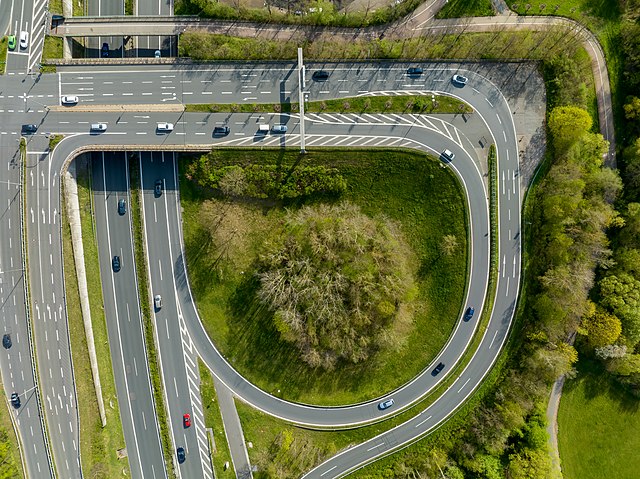In civil engineering, grade separation is a method of aligning a junction of two or more surface transport axes at different heights (grades) so that they will not disrupt the traffic flow on other transit routes when they cross each other. The composition of such transport axes does not have to be uniform; it can consist of a mixture of roads, footpaths, railways, canals, or airport runways. Bridges, tunnels, or a combination of both can be built at a junction to achieve the needed grade separation.
An example of the potential complexity of grade separation, seen in the Jane Byrne Interchange in Chicago
Seven various overpasses for grade separation in Spain near Barcelona
Rail-rail grade separation in Xiaoshan, China
The concept of grade separation includes all transport modes, such as a simple pedestrian bridge over rail tracks.
A road is a thoroughfare for the conveyance of traffic that mostly has an improved surface for use by vehicles and pedestrians. Unlike streets, whose primary function is to serve as public spaces, the main function of roads is transportation.
Bundesautobahn 73 and its slip road leading to Erlangen
The Porta Rosa, a Greek street dating from the 3rd to 4th century BC in Velia, with a paved surface and gutters
A paved Roman road in Pompeii
Part of the AVUS road in Berlin, the first automobile-only road, which served as an inspiration for Piero Puricelli's 1924 autostrada between Milan and the northern Italian lakes, the first motorway in the world.








